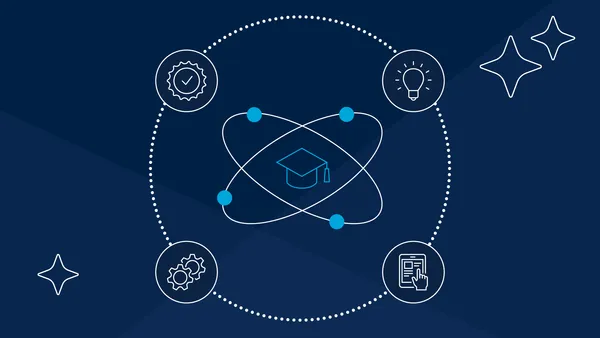Sean Michael Morris is vice president, academics at Course Hero. He co-authored "An Urgency of Teachers: the Work of Critical Digital Pedagogy" and was formerly senior instructor in learning, design and technology at the University of Colorado Denver.
For more than two decades, educational technology has wooed universities to invest in products that promise to make learning more efficient, education more accessible and students more successful on their path toward graduation. The pitch is that ed tech offers solutions to problems that teachers face, from plagiarism and cheating to communicating with students and monitoring their progress. But more often than not, ed tech presumes to understand teaching better than teachers do, and it neglects to listen to educators about how learning actually happens.
If ed tech is truly interested in the success of students, the industry must hear what faculty have to say.
Ed tech is focused on efficiency. The learning management system, or LMS — the ed tech tool that most college students and faculty are in constant contact with — is meant to move students from one semester to the next and ultimately to graduation. Functionally, the LMS is a space for uploading assignments, completing discussion questions, taking quizzes and recording grades. Within that functionality is embedded an assumption that learning can be instrumentalized into those component parts for the sake of efficiency and efficacy. A lot of institutions employ learning management systems specifically because their efficiency supports faster, more reliable graduation rates. So, ed tech focused on efficiency is an ideal solution.
But efficiency doesn’t necessarily mean student success; and student success isn’t strictly about grades. Student success is about meeting students’ needs, developing their creativity and their resourcefulness, and improving their lives — things that go far beyond the binary reward-and-punishment behaviorist approach of most classroom technology.
Most faculty know better than to assume that right answers equate to student success. As we’re witnessing a fundamental shift in student demographics over the last decade — from students once labeled as “nontraditional” to the recognition that working students with families and other obligations are now “new traditional” — the conversation around student success, and consequently, ed tech, must also shift. And if we are wise, higher education will shift from an institution-centric model concerned with graduation rates to one that orients around the students and their lives. A model like that will require ed tech to transition from a focus rooted in efficiency to one rooted in connections and relationships.
When I was teaching online classes, I did everything I could to push past ed tech. To help get to know my students, I read all of their discussion posts and took note of both what they wrote and didn’t write. If students posted shorter or fewer comments, stopped posting altogether or said something concerning, I knew something was wrong, and I addressed it.
Sometimes they were sick. Sometimes they were tired from working too many hours. Sometimes — and this is true of a growing number of college students — they were having trouble finding food or shelter or taking care of other basic needs. My training and experience as an educator helped me see when students were struggling and helped me give them the support they needed. Was that efficient? Not really. Did it help students succeed? In almost every case.
Ed tech needs to talk to faculty, to teachers at every level where technology is being used, in order to build solutions for the real problems in teaching and learning.
Teachers need classroom technology that helps them connect with and strengthen relationships with their students. They want autonomy to reach and teach their students in ways informed by their own education and experience. They want the freedom and creativity to make different and more effective use of classroom technology and to explore those teachable moments that steer them away from the syllabus. Teachers want a product that responds to what’s really happening in the classroom and in students’ lives. They don’t need educational technology that reinforces lockstep learning, but rather a pedagogical technology that complements their role as educators.
Too often, ed tech thinks it is speaking the language of education, when in fact it is talking past teachers — or simply talking too much. By listening to educators, ed tech can design products to give teachers the tools they actually need to teach through the screen, to reach, affirm and empower students, and to change for the better how institutions think about student success.
Ed tech has the power to make education a more humanizing experience, but only if its makers listen.














